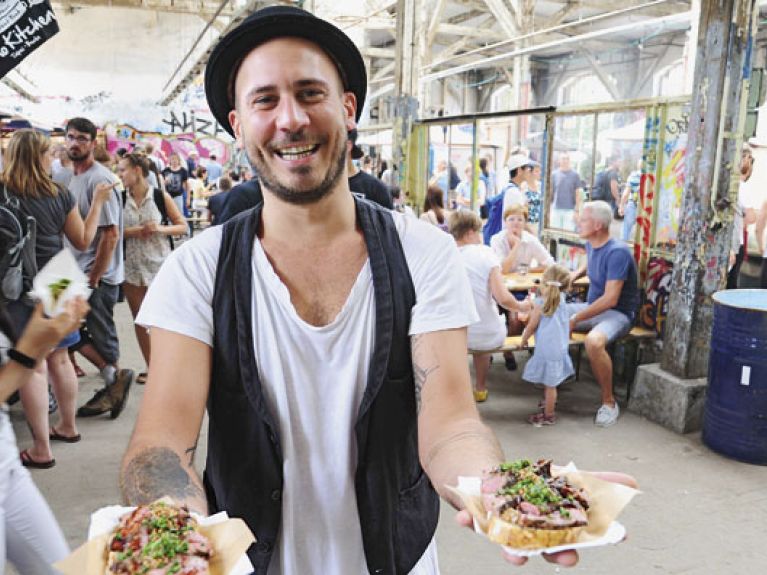Healthy eaters
Regional and international, vegan snacks and burgers – when it comes to food, contrasts are on trend. But the quality has to be right, and best of all someone else has done the cooking.

According to a German proverb, you are what you eat. If that’s true, then Germans must have multiple personalities. There have never been so many and so diverse forms of nutrition, and above all: they have seldom been so strongly associated with ethics, politics or good health. These are additives that mainly accompany the megatrends of vegetarianism and veganism. In Germany there are 7.8 million vegetarians and 900,000 vegans. Every single day, according to estimates by VEBU, the German vegetarian association, these numbers increase by 2,000 vegetarians and 200 vegans, who are gradually pushing veal escalope and roast pork off restaurant menus.
For some time now it has been perfectly normal for all supermarkets to stock products that a few years ago you would have had to travel long distances to find in special organic shops. In 2015 the retail food trade achieved a turnover of over 150 million euros with vegetarian and vegan substitutes for sausage and meat products alone. However, what goes up must come down again: meat is now making a strong comeback. “Some try asceticism, while their neighbours smoke whole sides of pork. That is typical of our time,” cultural studies specialist Markus Schreckhaas sums up the yin and yang of the German food scene. How about simply barbecuing a sausage? That’s old hat. Today you coat pieces of choice fillet for hours with a black beer and mustard marinade using a natural hair brush. Not only is the barbecue currently being elevated to a higher gourmet level, but the burger is becoming a meal for foodies. “Fast food is evolving into fast good,” says trend researcher Hanni Rützler. “It’s all about freshness here – fresh juices, fresh salads and a new appreciation of regional quality.”
Regionally and organically produced meat and vegan de luxe are both found in equally peaceful and delicious coexistence in street food markets such as Markthalle Neun in Berlin Kreuzberg. It is also where you are bound to find one of roughly 680 German microbreweries that are helping the German beer industry to experience a renaissance with their craft beers. Also totally on trend: food trucks. Some 1,000 of these custom designed kitchens on wheels are currently travelling German roads. Their menu boards list not only tried and trusted products like burgers in every conceivable form, but also traditional regional fare like Allgäu cheese noodles or international cuisine: Brazilian chicken croquettes or the South African speciality bunny chow, a hollowed out white loaf filled with curry.
Despite all this culinary diversity, there are some common denominators: high quality, great but unpretentious cooking and prompt delivery. This is because Germans are increasingly eating away from home. In 2015, roughly three billion fewer meals were eaten at home than just one year earlier. Instead people go out onto the street – to simultaneously “snack” on the region and the world, open to something new and very glad that someone else stood at the cooker. ▪

